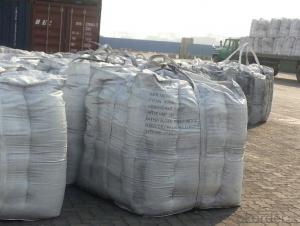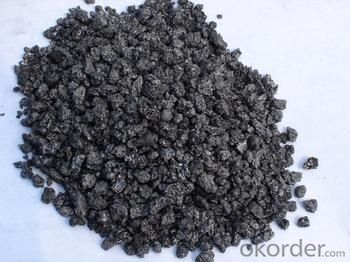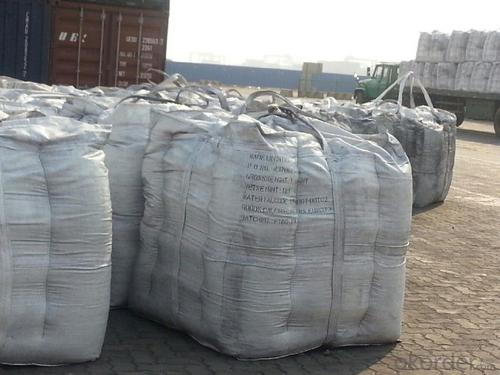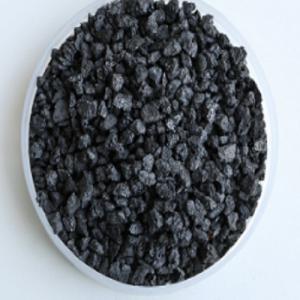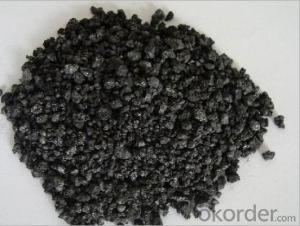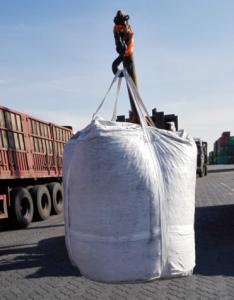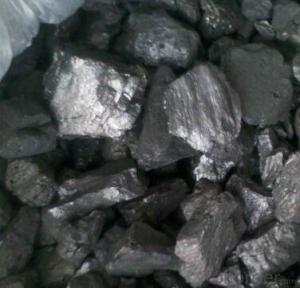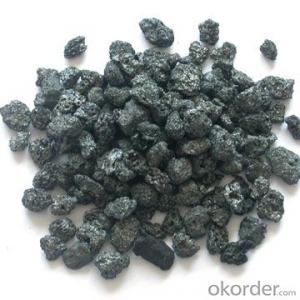Calcined Petroleum Coke/Calcined Petroleum Coke Price
- Loading Port:
- Tianjin
- Payment Terms:
- TT OR LC
- Min Order Qty:
- 1 m.t.
- Supply Capability:
- 10000000 m.t./month
OKorder Service Pledge
OKorder Financial Service
You Might Also Like
1.Structure of Calcined Petroleum Coke Description
Calcined Petroleum Coke is made from raw petroleum coke,which is calcined in furnace at a high temperature(1200-1300℃).CPC/Calcined Petroleum Coke is widely used in steelmaking,castings manufacture and other metallurgical industry as a kind of recarburizer because of its high fixed carbon content,low sulfur content and high absorb rate.Besides,it is also a best kind of raw materials for producing artifical graphite(GPC/Graphitized Petroleum Coke) under the graphitizing temperature(2800℃).
2.Main Features of the Calcined Petroleum Coke
High-purity graphitized petroleum coke is made from high quality petroleum coke under a temperature of 2,500-3,500°C. As a high-purity carbon material, it has characteristics of high fixed carbon content, low sulfur, low ash, low porosity etc.It can be used as carbon raiser (Recarburizer) to produce high quality steel,cast iron and alloy.It can also be used in plastic and rubber as an additive.
3. Calcined Petroleum Coke Images
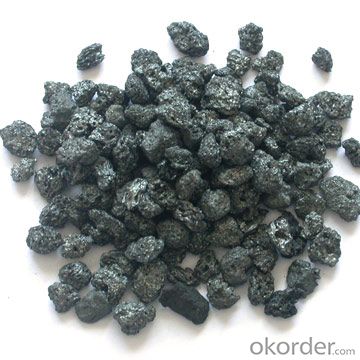
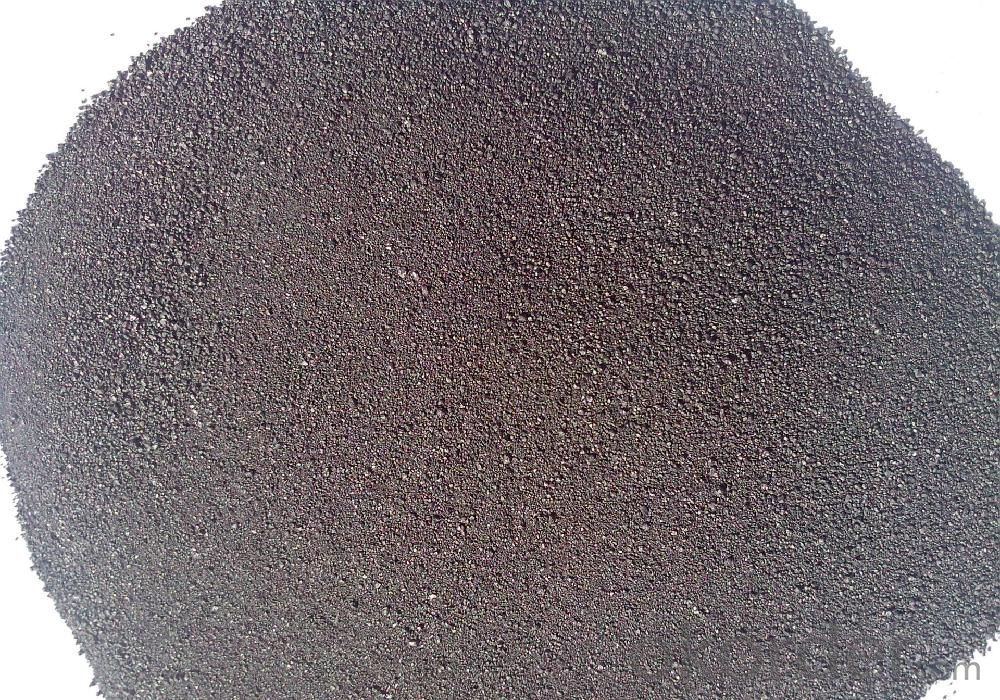
4. Calcined Petroleum Coke Specification
| CHEMICAL PROPERTIES | |||
| Unit | Limit Value | ||
| A | B | ||
| FC | % | 98.5 min | 98.5 min |
| S | % | 0.5 max | 0.8max |
| Ash | % | 0.8 max | 0.9max |
| Volatile Matter | % | 0.7 max | 0.8max |
| Moisture | % | 0.5 max | 0.5max |
| PHYSICAL PROPERTIES | |||
| Size | mm | 0~1 and 1~10 (90% min) | |
| or as per buyer's requirement | |||
| PACKING | 25kgs/bag or 1000kgs/jumbo bag | ||
5.FAQ of Calcined Petroleum Coke
1). Q: Are you a factory or trading company?
A: We are a factory.
2). Q: Where is your factory located? How can I visit there?
A: Our factory is located in ShanXi, HeNan, China. You are warmly welcomed to visit us!
3). Q: How can I get some samples?
A: Please connect me for samples
4). Q: Can the price be cheaper?
A: Of course, you will be offered a good discount for big amount.
- Q: How does carbon contribute to the structure of DNA?
- The structure of DNA relies heavily on carbon, as it plays a critical role in its composition. Carbon is a crucial element in the formation of the sugar-phosphate backbone, which is an integral part of the DNA molecule. This backbone consists of alternating sugar and phosphate molecules, with the sugar molecule being deoxyribose in DNA. Deoxyribose sugar contains five carbon atoms, making carbon a significant component in its structure. These carbon atoms provide stability and rigidity to the backbone, ensuring the overall structure of the DNA molecule remains intact. Additionally, carbon also contributes to the formation of the nitrogenous bases that form the ladder-like structure of DNA. There are four nitrogenous bases in DNA: adenine (A), guanine (G), cytosine (C), and thymine (T). Carbon atoms are present in the structure of each of these bases, giving them their distinct chemical properties. Various functional groups containing carbon, such as amino and keto groups, actively participate in hydrogen bonding and stacking interactions that determine the base pairing within the DNA double helix. To summarize, carbon is an indispensable element in the structure of DNA. It not only provides stability and rigidity to the sugar-phosphate backbone but also plays a crucial role in the formation of the nitrogenous bases. The unique properties of carbon enable DNA to maintain its double helix structure and facilitate the accurate transmission of genetic information.
- Q: What is carbon Yi virus?
- Not viruses, anthrax bacillus, anthraci (Bacillus) belongs to aerobic bacillus, can cause sheep, cattle, horses and other animals and human anthrax. Anthrax was as lethal agents of imperialism. Herdsmen, farmers, furs and butchers are susceptible to infection at ordinary times. Skin anthrax is sporadic in our country, so we should not relax our vigilance. Biological characters (1) morphological staining: Bacillus anthracis is thick and ends are flat or sunken. Are like bamboo like, no power, no flagella, gram positive bacteria, the in sufficient oxygen, suitable temperature (25 to 30 DEG C) condition to form spores. No spores can be formed in living or dissected bodies. Spore oval, located in the middle of the bacteria, its width is less than the width of bacteria. Capsules can be formed in humans and animals, and in capsules incubated with CO2 and serum, they can also form capsules. The formation of capsules is a toxic feature. Bacillus anthracis is affected by a low concentration of penicillin, and bacteria can be enlarged to form a bead, called "beaded reaction"". This is also a unique reaction of Bacillus anthracis. (two) the culture characteristic of this bacterium is obligate aerobic, and it is easy to breed in common medium. The optimum temperature was 37 DEG C, and the optimum pH was 7.2 ~ 7.4. After 24 hours on agar plate, the rough colony of 2 ~ 4mm Diameter was developed. The colonies were ground glass like, irregular edge, like curly hair, there are one or several small tail processes, this is the expansion of reproduction in 5 caused by bacteria to 10% sheep blood agar plate, no obvious hemolysis ring around the colony, but a long culture can have mild hemolysis.
- Q: What are the industrial uses of diamonds?
- Diamonds have various industrial uses due to their exceptional hardness and thermal conductivity. They are commonly used as abrasives in cutting, grinding, and polishing tools for materials like glass, ceramics, and metals. Additionally, diamonds are utilized in the production of high-quality drill bits for drilling wells and mining operations. Their thermal conductivity makes them valuable in heat sink applications, such as in the manufacturing of computer chips and laser technology. Diamonds are also employed in the production of specialized lenses and windows for high-pressure research and industrial lasers.
- Q: What is carbon black pigment?
- Carbon black pigment is a finely divided form of carbon that is primarily used as a coloring agent in various applications. It is produced by the incomplete combustion or thermal decomposition of hydrocarbons, such as coal tar, petroleum, or natural gas. The resulting carbon black particles are extremely small and have a high surface area, which gives them unique properties. Carbon black pigment is known for its intense black color, high tinting strength, and excellent UV stability. It is widely used in the production of inks, paints, coatings, plastics, rubber, and various other materials. The pigment particles disperse well in these mediums, providing a deep and uniform black coloration. In addition to its coloring capabilities, carbon black pigment also offers several other desirable properties. It enhances the durability, weather resistance, and electrical conductivity of materials. It can also improve the UV resistance and absorption properties of coatings and plastics, making them more resistant to fading and degradation caused by sunlight exposure. Moreover, carbon black pigment is chemically inert and does not react with other substances. This makes it suitable for use in a wide range of applications without causing any undesired chemical reactions. It is also non-toxic and has a low environmental impact, making it a preferred choice for many industries. Overall, carbon black pigment is a versatile and widely used additive that provides deep black coloration, durability, and enhanced performance to a variety of materials. Its unique properties make it an essential component in numerous industries, contributing to the production of high-quality products.
- Q: What is latent carbon?
- Prochiral carbon atom (prochiral carbon atoms).A company has four completely different carbon atoms or groups of atoms is called chiral carbon atoms. When a carbon atom with two identical and two different atoms or groups of atoms such as Caabe, the carbon atom is called prochiral carbon atom (prochiral carbon) or prochiral center. If the two of the same atom or group of atoms (a, one of the many hydrogen atoms) is a different from a, B, e atom or group of atoms substituted by the D, get a new chiral carbon atoms such as methylene Cabed. ethanol and propionic acid molecules in the carbon atom is prochiral carbon atoms.
- Q: How does carbon dioxide affect waste management processes?
- The impact of carbon dioxide on waste management processes is significant. One way it influences waste management is through the decomposition of organic waste. When organic waste, such as food scraps or yard waste, is sent to landfills, it decomposes without oxygen, resulting in the production of methane. Methane is a powerful greenhouse gas that contributes to climate change, being approximately 25 times more effective at trapping heat in the atmosphere than carbon dioxide over a 100-year period. Thus, the presence of carbon dioxide indirectly leads to increased methane emissions, exacerbating the greenhouse effect. Additionally, carbon dioxide emissions can occur during waste management activities like transportation and disposal. Vehicles that run on fossil fuels are used to collect and transport waste to landfills or incineration facilities, releasing carbon dioxide into the atmosphere. Furthermore, the incineration process itself produces carbon dioxide as a byproduct. To mitigate the impact of carbon dioxide on waste management, several strategies can be employed. Firstly, efforts to reduce waste and recycle can decrease the need for landfilling or incineration, consequently reducing carbon dioxide emissions. Moreover, implementing waste-to-energy technologies, such as anaerobic digestion or landfill gas capture, can harness the energy potential of organic waste while reducing methane emissions. Anaerobic digestion converts organic waste into biogas, which can be used for electricity or heat generation. Landfill gas capture systems collect methane emitted from landfills and repurpose it for energy production. Lastly, transitioning to low-carbon transportation options, like electric or hybrid vehicles, for waste collection and transportation can help decrease carbon dioxide emissions associated with waste management processes. In conclusion, carbon dioxide impacts waste management by contributing to methane production during organic waste decomposition and by generating emissions during waste transportation and disposal. By implementing waste reduction strategies, waste-to-energy technologies, and transitioning to low-carbon transportation options, the impact of carbon dioxide on waste management can be minimized, resulting in more sustainable and environmentally friendly waste management practices.
- Q: Search for a summary of the importance of carbon in life. If you write well, you can add points,
- People familiar with the organic carbon material more use in daily life and industrial and agricultural production, mainly on gasoline, diesel, kerosene, liquefied gas, natural gas, chemical solvents and fire extinguishing agents such as carbon tetrachloride, carbohydrates (rice, wheat, corn, sorghum, sweet potatoes, potatoes, sugar, fruit, vegetables, paper etc.) chemical fiber, cotton, wood, etc. not all examples.In short, without carbon and its compounds on earth, humans and all living things can not survive and develop, or the earth is a lifeless sphere with only rocks and soil
- Q: How dnf advanced carbon ashes?
- Before 70, strengthening with carbon, then the activities in the mall to sell high carbon, have to use coupons to buy, that is to improve the success rate of strengthening, now is also the time to rest, 80 edition, replaced by strengthening the body of the colorless, carbon was automatically replaced colorless (1: 5) senior carbon system did not automatically change on the left
- Q: Today in the market to buy Yuba, instructions have such a word that I don't understand, please master Zhijiao: carbon fiber after energized carbon molecule formation of Brown movement, this movement can be effective in most of the electrical energy into the far infrared.
- They are the transition of vibrational levels or rotational levels under conditions of carbon energization. All molecules are doing irregular movements, for example, there is a bond between two molecules, equivalent to a spring connecting two balls connected to two balls, they vibrate, the frequency is v.
- Q: How are carbon nanotubes produced?
- Carbon nanotubes are typically produced through a process called chemical vapor deposition (CVD), where a carbon-containing gas is introduced into a high-temperature reactor. Under controlled conditions, the carbon atoms assemble and form nanotubes on a catalyst surface, such as iron or nickel. Other methods, including arc discharge and laser ablation, can also be used to produce carbon nanotubes.
Send your message to us
Calcined Petroleum Coke/Calcined Petroleum Coke Price
- Loading Port:
- Tianjin
- Payment Terms:
- TT OR LC
- Min Order Qty:
- 1 m.t.
- Supply Capability:
- 10000000 m.t./month
OKorder Service Pledge
OKorder Financial Service
Similar products
Hot products
Hot Searches
Related keywords

